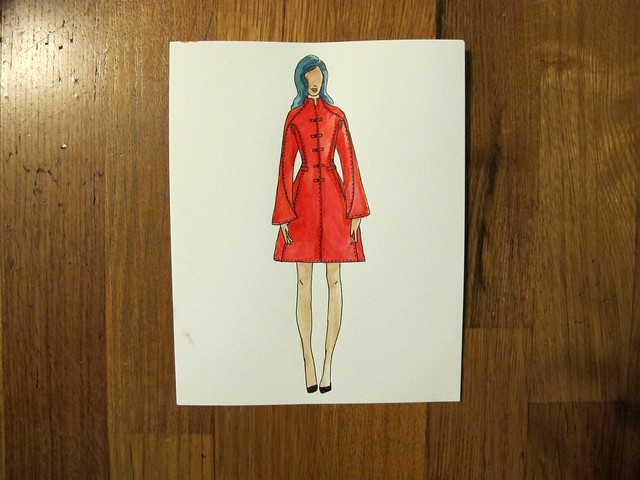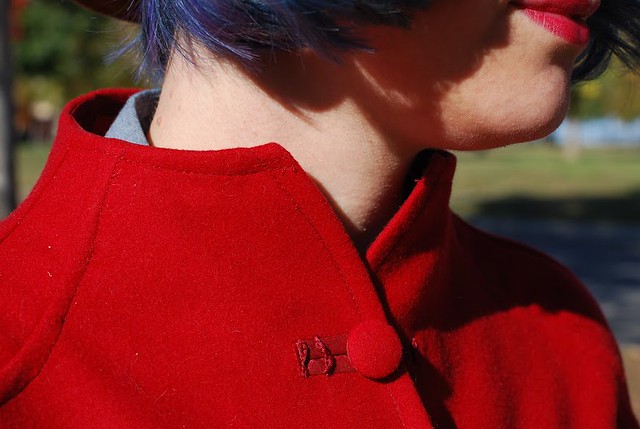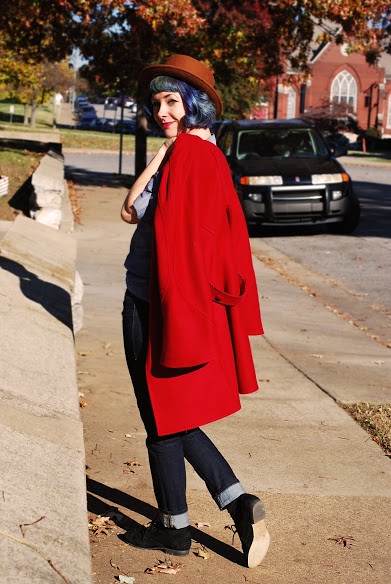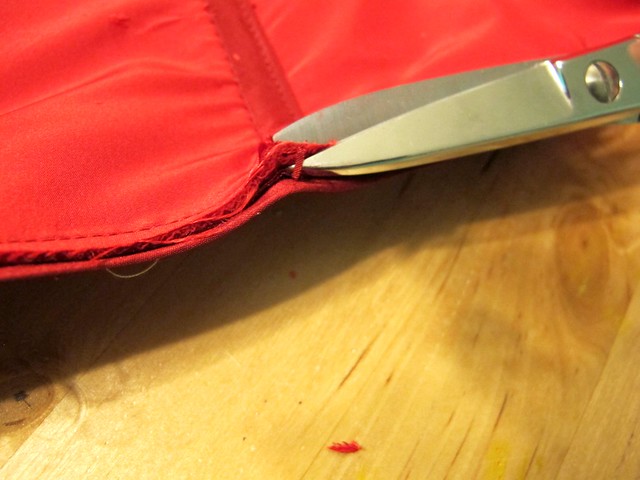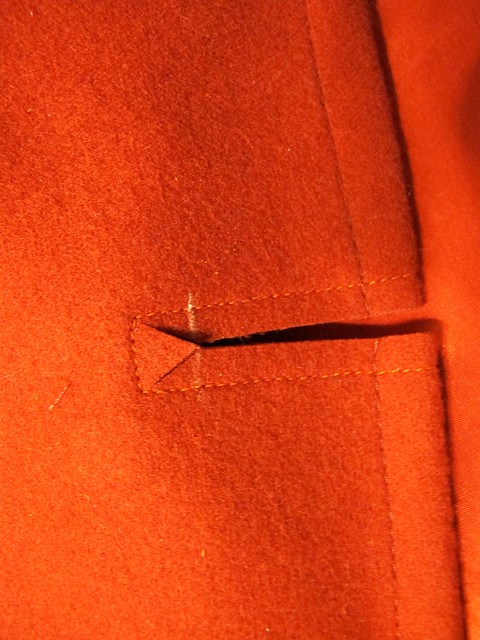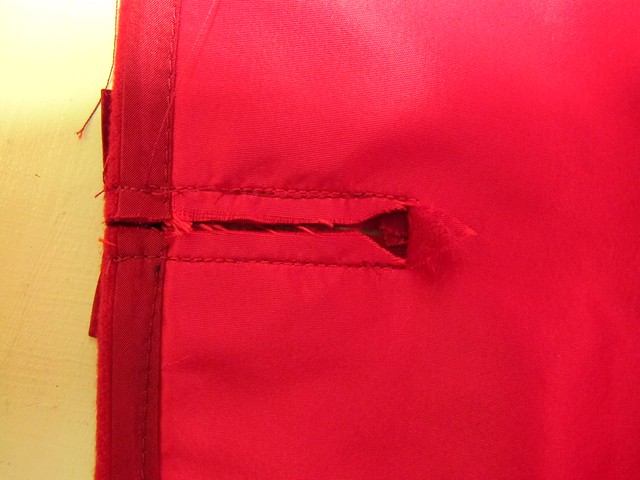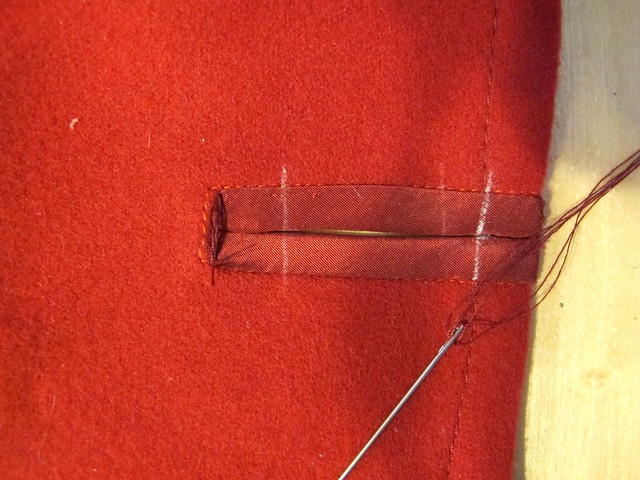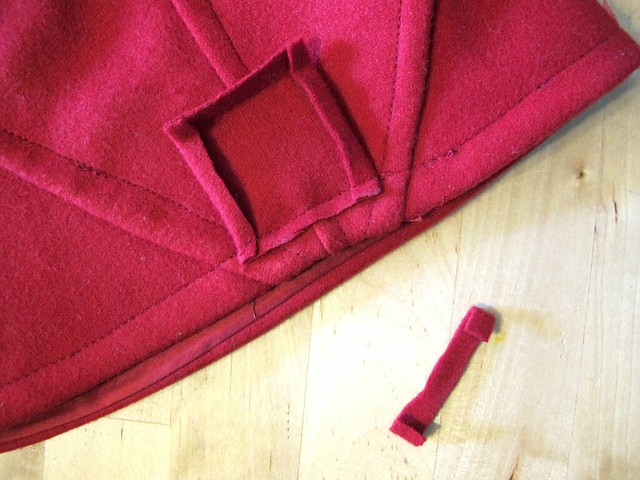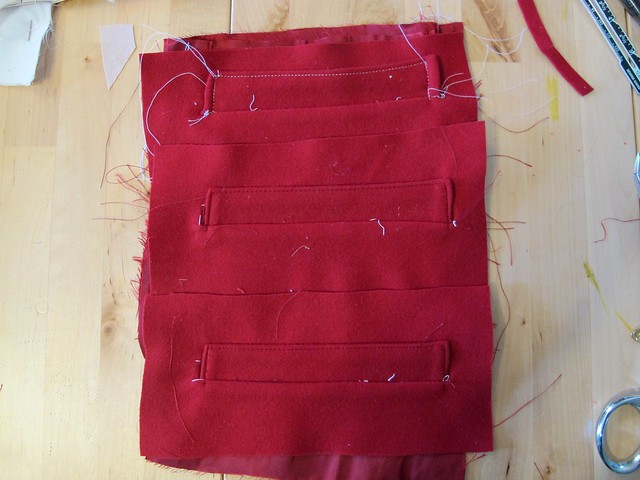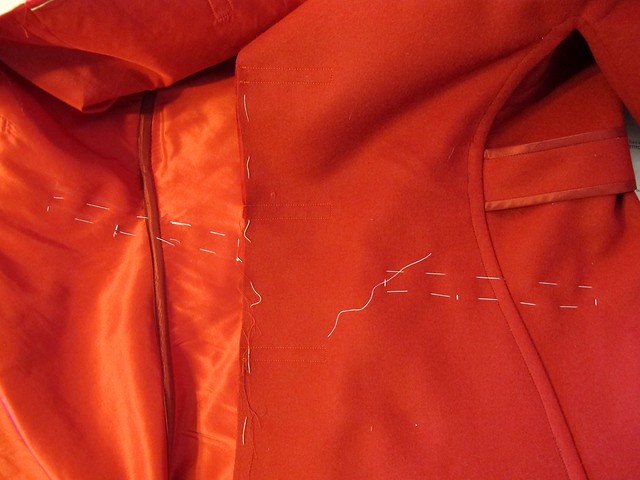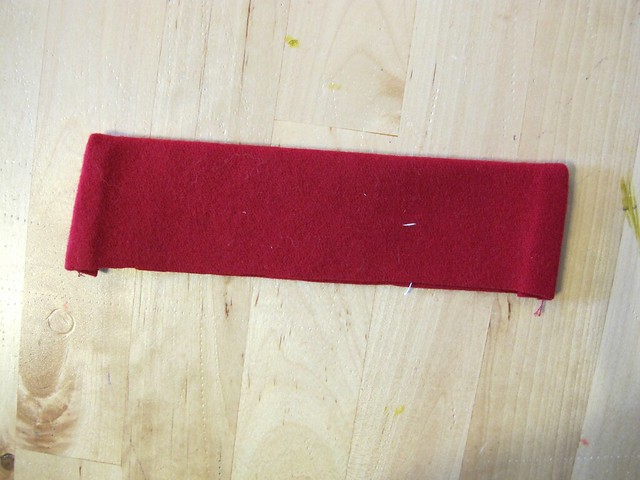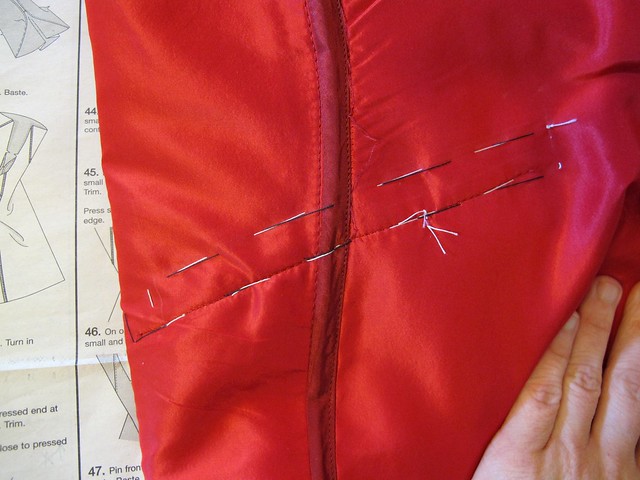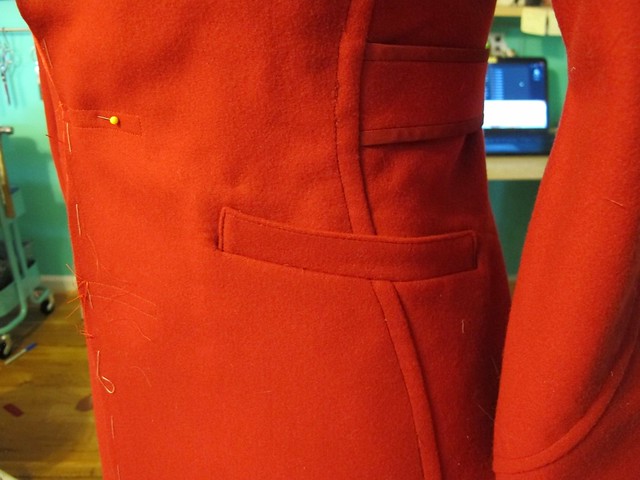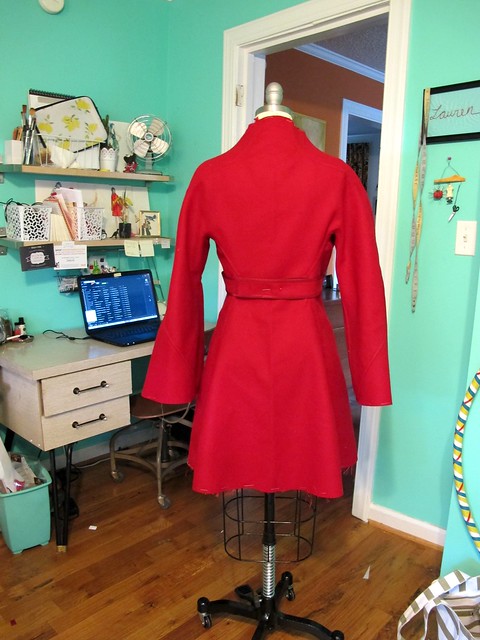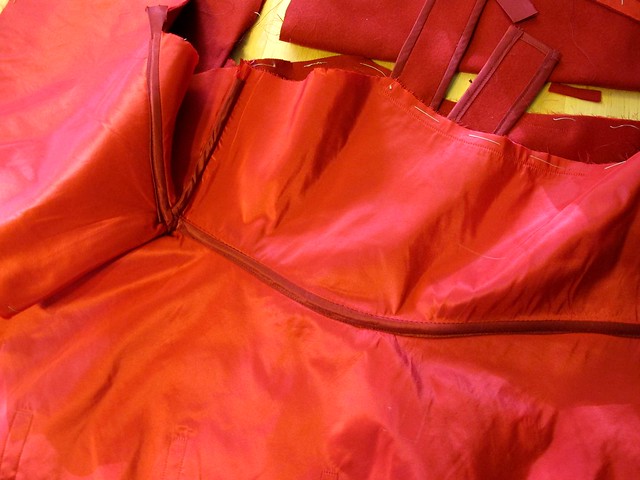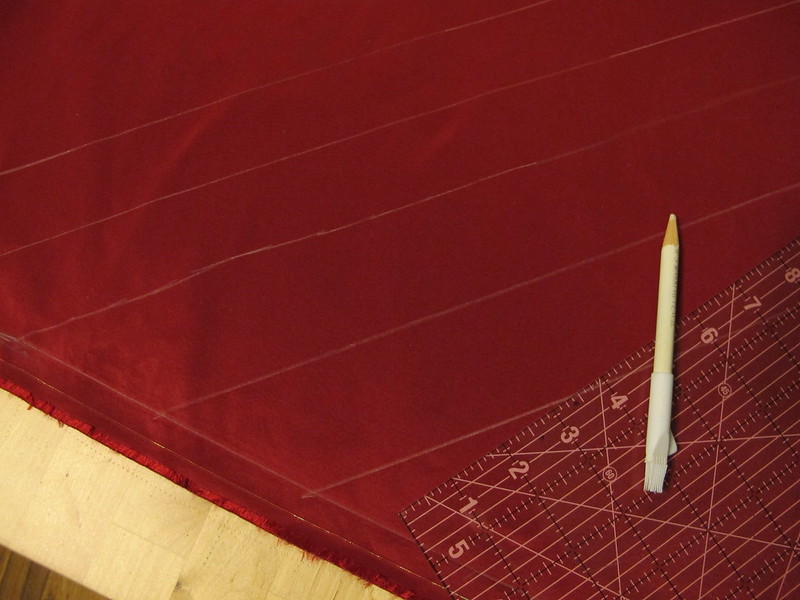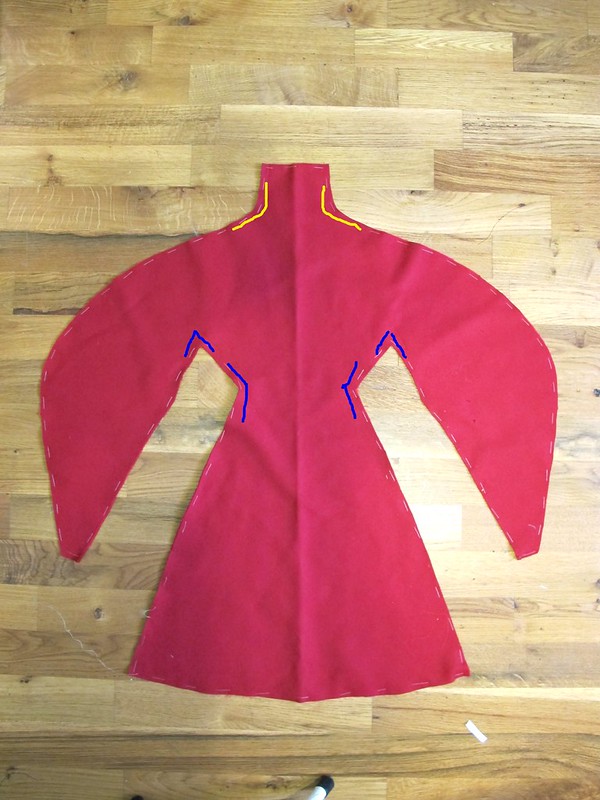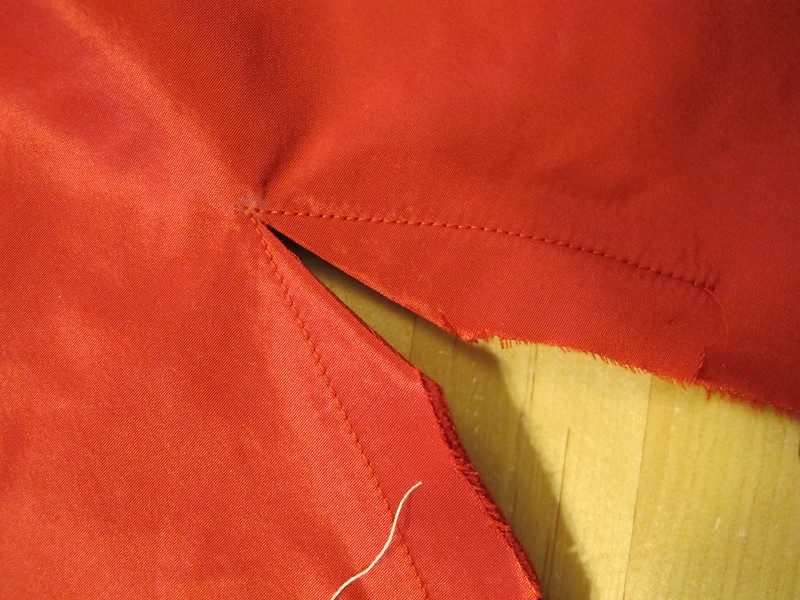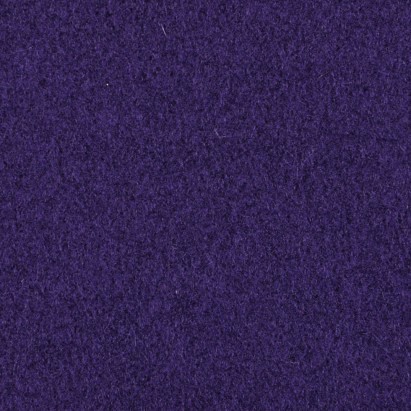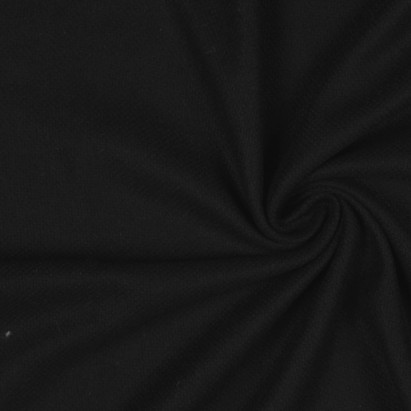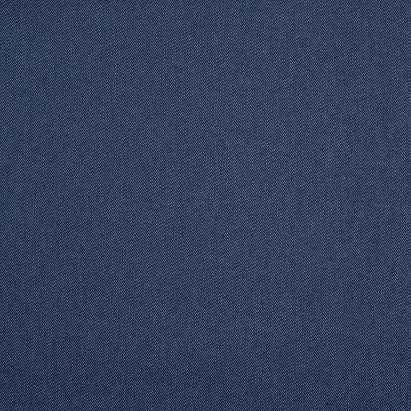Well, no that the V1419 Ralph Rucci Sewalong has officially wrapped, I guess I can finally show y’all my coat! For those who didn’t catch my post on the Mood Sewing Network yesterday to see my completed coat a day early – your patience is finally being rewarded, including some never-before-seen shots that weren’t included in the original post! How exciting!
Anyway, coat!
Considering how much I went over the making of this coat at length (see all my posts tagged v1419 here), I won’t be going over the construction so much in this post. If you want more info, feel free to check the tag – or just holler out some questions in the comments (I don’t expect anyone who didn’t actually sew along with the sewalong to have actually read the posts – they were pretty intense, and I find sewalong posts kind of boring if I’m not part of the action, you know? Anyway, snaps to you if you did read the posts! I hope you learned some new coat-making tips and tricks 😉 ). Here’s a general rundown of the basic information, for those who are dropping in for the Big Reveal:
Pattern: Vogue 1419
Fabric: From the Mood Fabrics flagship NYC store – I enlisted the help of my favorite Mood dude, George, to assist me in finding my perfect red wool coating – and he knocked it out of the park! This coating is red virgin wool, it’s nice and thick with a great amount of body to give the coat it’s lovely shape. The wool itself is soft and easily malleable (very necessary for all the crazy intersecting seams of this pattern!), and the color is just PERFECT! The pattern itself does not call for lining, but I did add a layer of bright red silk taffeta as an underlining, to help the coat slide on and also as an additional layer of warmth. The contrast (inside binding, bound button holes, belt trim) is also silk taffeta, in a darker red that matches the wool coating. I think it gives a nice bit of textural interest and keeps the coat from being just straight up loud and red. Both silk taffetas were also purchased from the Mood Fabrics store in NYC, and the colors were chosen with the help of George.
Notions: Just thread and buttons! I had my buttons custom-made here in Nashville by a local lady who sells them through Textile Fabrics. Since my coating is SUPER thick (way too thick for those sad little button kits that you can buy), it needed some heavy-duty machinery to get the fabric on. I’ve used this service in the past for previous coat buttons, and the quality is excellent.
Sizing & Alterations: I cut the size 6 and sewed the coat exactly as drafted, except at the waistline where I used a 1/2″ seam allowance instead of the standard 5/8″ (just to give myself a tiny bit of eating room 😉 ). I only altered the length – removed 3″ from the hemline and 1″ from the sleeve length.
Here’s my original inspiration, in watercolor 🙂
I think it turned out pretty close, if not better! 🙂
Don’t you love the photos? These were taken by my friend and fellow knitter, Alannah Arnold, who was almost as excited about this coat as I was! Alannah and I meet with a group of ladies every Monday for a casual (and, um, booze-filled, haha!) knitting night at my favorite local bar. She’s listened to me talk about this coat for weeks at this point – and offered to take photos once it was done. Which is awesome, because they turned out WAY better than anything I could have shot in front of my shed!
I met with her in East Park, in East Nashville, to take these photos. That’s a feat in itself – anyone who knows me, knows I will kick and scream when it comes to crossing the river into East Nashville. Never mind that driving into East Nashville is like driving into Brooklyn – it’s actually not that bad (unless there’s a Titans game – if then, forget about it!), it’s just fun to complain about 🙂 Regardless, East Nashville has the prettiest fall trees, and this park is undeniably beautiful. So, I made some sacrifices (har har) and ended up with a pretty great set of pictures to match my pretty great coat! Yay!
Ooh, and I even found a Porsche while I was at it 🙂 haha!
If I haven’t already made it completely obvious – I’m SO happy with my finished coat! Sewing it up was so satisfying, and absolutely worth it. It is very dramatic and theatrical – so it’s a bit excessive for daily wear. I don’t think I’ll be bringing this to London, unfortunately, as it’s definitely not very practical (it’s too fitted to really accommodation multiple layers, plus I could see those bell sleeves getting real annoying real fast after 2 weeks of daily wear). However, it is the PERFECT topper for all these upcoming holiday parties that are just around the corner 😉
Let’s also not forget how this is one of few instances where sewing can actually save you money – this coat cost less than $200 in materials, whereas the original designer version has been rumored to run closer to $10,000. Sure, making a little cotton sundress will probably set you back more than whatever you would paid from a mall retailer – but knocking off couture? That’s where the savings really start to show 😉
I will leave you with this photo of me, wearing my knock-off designer coat, throwing leaves in front of a rich person’s house. Probably the same person who owns that Porsche, to be honest:

Be sure to check out the McCall Pattern Company blog to see Meg’s completed coat, if you haven’t already done so! Big thumbs up to everyone who participated in the sewalong – and big, huge thanks to Meg for agreeing to cohost this beast of a sewalong alongside me. Couldn’t have done it without you! 🙂 Don’t forget to use the hashtag #V1419sewalong so it will show up on this tagboard. We encourage you to upload your photos to the V1419 Flickr group, the Vogue Patterns Facebook page, and pin it to the Pinterest board
Didn’t join the sewalong but still want to make your own designer Ralph Rucci? Check out my V1419 tag and the McCall Pattern Company Blog for all the posts pertaining to this sewalong. I can’t wait to see everyone’s finished coats!
What do you think? Would you ever tackle a crazy long intense project like a coat? What about THIS coat? Man, I love making coats!
Disclaimer: My pattern was provided to me free of charge from the McCall Pattern Company, and the fabric was provided from Mood Fabrics as part of my monthly allowance for participating in the Mood Sewing Network. Still, I definitely made this entire coat myself – sooo, that should count for something 😉


